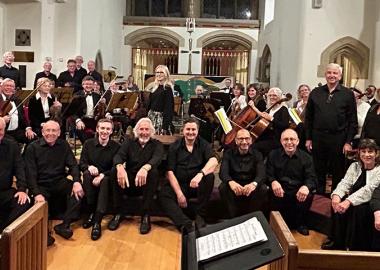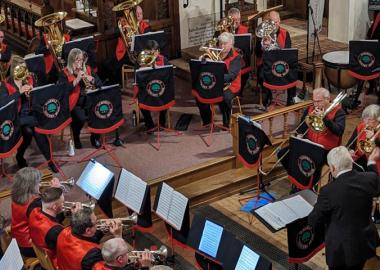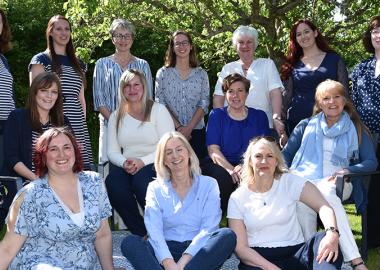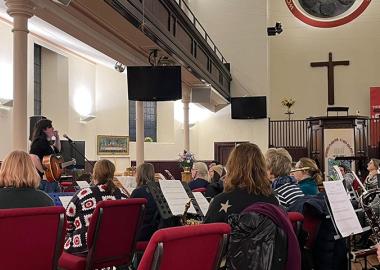Three months into composer Edmund Hunt's Adopt a Composer collaboration with The Singers, he finds inspiration for the composition's text from a famous local figure.
In December, I had the pleasure of singing with the choir for their annual Christmas concert, in the beautiful Victorian gothic splendour of St. George’s church, Jesmond. It was fun, albeit a little nerve-wracking, to play my Northumbrian pipes in my folksong setting of the Agnus Dei (written in 2015), a recording of which you can listen to here.
Although I am not currently planning to include the Northumbrian pipes in my composition for The Singers, the experience of performing with the choir has shaped my approach to the music that I will write for them. In becoming an active participant, rather than simply an observer, I have been able to gain a far deeper understanding of the voices with which I am working. As someone who grew up in the church choral tradition, I have always had a deep appreciation of the physical experience of singing in a choir. You develop an unconscious yet instantaneous reaction to the intonation, breathing and vocal timbre of the singers around you, until your sense of self becomes subsumed into the choral organism of which you are a part.
Following my experience of singing in the choir, feedback from choir members (in rehearsals, in the pub and via email) has allowed me to take account of the singers’ likes, dislikes and suggestions for the new piece. Yet the actual content of the piece has taken longer to determine. After discussion with the choir’s director, Donald, we arrived at the idea of a piece in several contrasting movements, which could either be performed separately or together, depending on the occasion. When considering which texts to use, my initial idea was to draw on the work of the Venerable Bede, reflecting the rich history of the choir’s Northumbrian home. Donald mentioned the existence of a Latin inscription of a prayer by Bede. The text of this prayer is displayed in gold letters on the wall above Bede’s shrine in Durham cathedral, where the choir sings every January. As a result, this text has become the centrepiece of my new composition.
Feedback from the choir has helped me to find texts and a structure for the composition, allowing me to progress to the next, crucial stage of the process; the musical material itself.
For me, this is an incredibly exciting part of the composition. It is like standing on a cliff overlooking a vast, unknown landscape that is hidden under a blanket of cloud.
Beyond lie an almost overwhelming number of possible routes; each small decision leads inexorably to one of many different destinations.
As I re-read and internalise the texts with which I am working, I begin to become aware of shapes through the mist. Density, form and colour start to acquire greater definition. Although it is far from finished, I have been living with the piece for some time. Even when I am not at my desk, it is a constant, living presence in my mind. More often than not, the times when I am not composing (rushing to catch the train, or waiting for the kettle to boil) are the times when new ideas, or solutions to musical problems, will suddenly become obvious. These moments all add to the excitement of the composition process. Workshops, rehearsals and further discussions will allow me to test and refine the piece during the next stage of the project.










